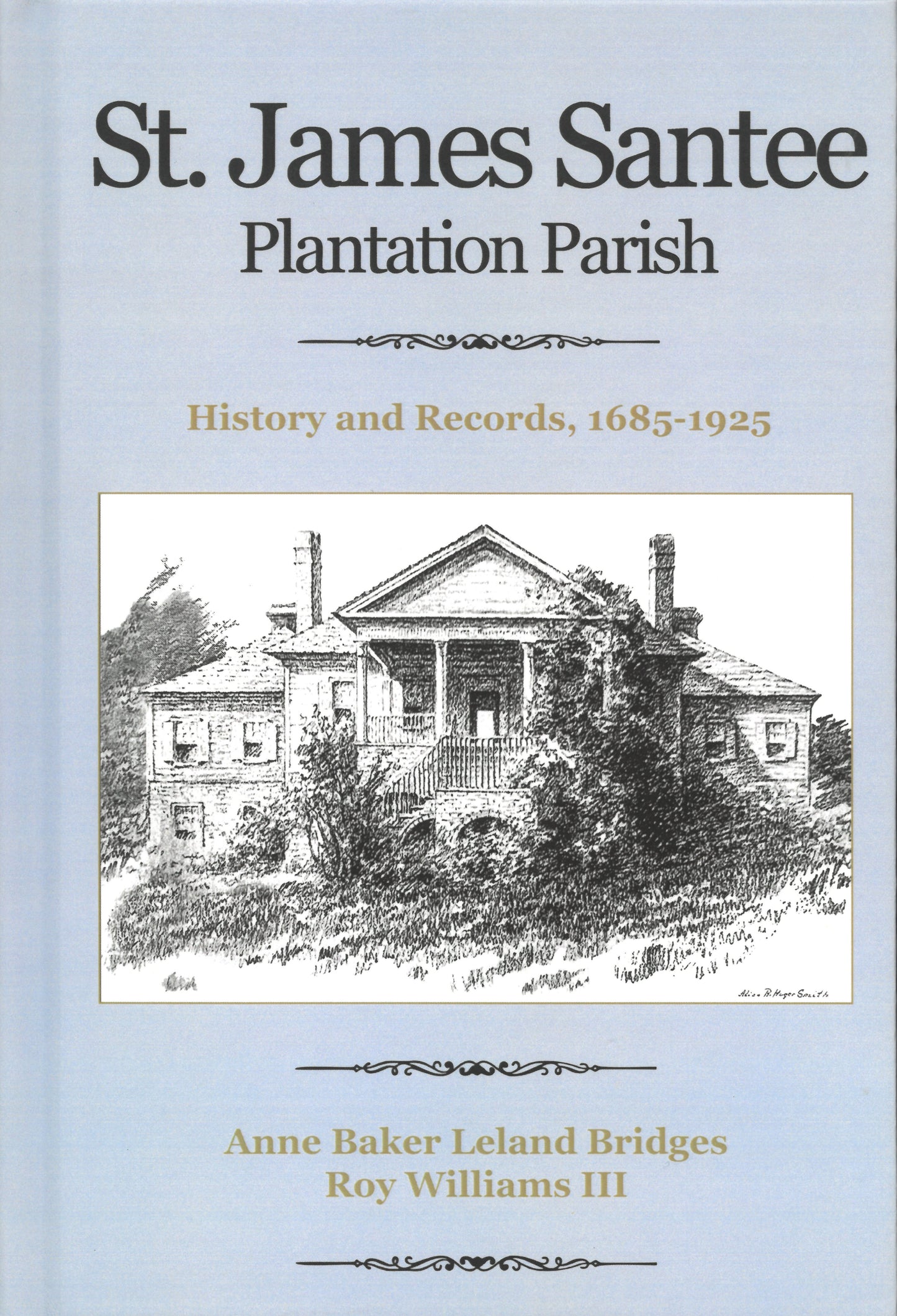Class Publishing/Friends of Hampton Pltn
St. James Santee Plantation Parish, History and Records 1685-1925 ~ Bridges, Williams
St. James Santee Plantation Parish, History and Records 1685-1925 ~ Bridges, Williams
Couldn't load pickup availability
NEWLY RELEASED 2nd EDITION - The Quintessential History of the Parish. By Anne Baker Leland and Roy WIlliams III
HISTORY IS LIFE! Sharing and preserving the history of the Parish is the primary mission of the Village Museum.
Anne Baker Leland Bridges and Roy Williams III
Isolated St. James Santee Parish has been eclipsed frequently in South Carolina history by both Charleston and Georgetown. Yet it is a vital historical link between the two and this oversight makes their history incomplete. Much of the wealth that built many of Charleston's buildings and institutions had its origins in the indigo, cotton, and rice culture of the St. James Santee Parish area - basically the area near McClellanville and Jamestown in South Carolina.
Now Anne Baker Leland Bridges and Roy Williams III have collaborated in St. James Santee, Plantation Parish, History and Records 1685-1925, to acquaint the general reader of South Carolina history with the story of this unique parish.
Settlement of the area began with the Huguenots who settled plantations along the Santee River in 1685 after fleeing religious persecution in France. This is the story of the planters at home and the story of their impact on the state and nation. In a well written and highly readable style, it "has the tight mixture of local interest and regional impact," according to Dr. Alexander Moore, former director of the South Carolina Historical Society.
In 1706 St. James Santee Parish was incorporated into the Church of England and was the first parish organized outside of Charleston. The region reached its zenith after Jonathan Lucas built the first waterpowered rice mill c. 1787 at Peach Tree Plantation. This mill did for the rice culture what the cotton gin did for cotton. After the Civil War, St. James Santee's plantation world collapsed and the struggle of its inhabitants to survive was a poignant and tragic story.
Bridges, a native of McClellanville, is a descendant of the earliest English and French Huguenot families in the Carolina Lowcountry. She founded the St. James Santee Parish Historical Society and has collected and transcribed historical documents about the area for the last twenty years.
Williams is a descendant of early English settlers in both South and North Carolina. He is a recently retired high school history teacher and president of the St. James Santee Parish Historical Society. He and his wife reside on Sullivan's Island.
Together, the two authors have produced a 541 page account of the land called "French Santee" which is "fascinating, penetrating, and well-documented," according to Arthur Manigault Wilcox, past-president of the Huguenot Society of South Carolina.
It is arranged chronologically and begins with the Huguenot settlers in 1685 and ends in 1925. In between are chapters on the "Frontier Parish," the Revolutionary War, the hurricane of 1822, the rice-planting culture, the Civil War, the development of McClellanville as a village and the churches that sprang up there, and the devastating fires of plantation homes. The 335-page main text includes photographs of Charleston homes owned by parish residents, plantations, maps, churches, and famous residents. Many of the photographs and first-hand accounts in the form of letters have never been published before.
Family names throughout the book are readily recognized today - such as Mazyck, Ravenel, Manigault, Allston, Bonneau, Huger, Doar, Morrison, Leland, McClellan, Gaillard, Seabrook, Guerry, Horry, Legare, Lofton, Lucas, Lynch, Pinckney, Rutledge, and Simons. The volume is meticulously indexed.
Four appendices to the book include a list of the French and Swiss settlers to this region of South Carolina, the Parish Register of St. James Santee, 1758-1788, compiled by Mabel L. Webber, a list of previously unpublished Parish Records of St. James Santee, 1846-1921, and Cemetery Inscriptions from St. James Santee Parish Church.
Share


